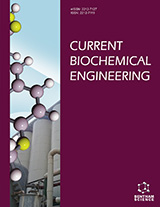Abstract
Retting may be defined as the separation of bast fibres from the core tissues of the stem. The methods of retting have witnessed technological advances based on intervention of microbial enzymes resulting in better quality of fibers. The traditional methods of retting namely water retting and dew retting suffered from several limitations like poor quality of fibers, comparatively large space and time requirement, dependence on weather conditions, huge manpower involvement, pollution and high cost of drying. The microbial enzymes predominately pectinases are becoming popular for retting of fibers owing to the fact that it results in high quality fiber, save time and is also ecofriendly. The enzymatic retting is now preferred over the traditional methods resulting in formulation of several commercial enzyme preparations like Flaxzyme and Viscozyme. The variability in types of natural fibers, different retting methods, intervention of microbial enzymes for retting of fibers, parameters for efficient retting aresome of the important highlights of this review.
Keywords: Retting, natural fibers, microbial enzymes, water retting, dew retting, pectin lyases, polygalacturonases.
 24
24

















